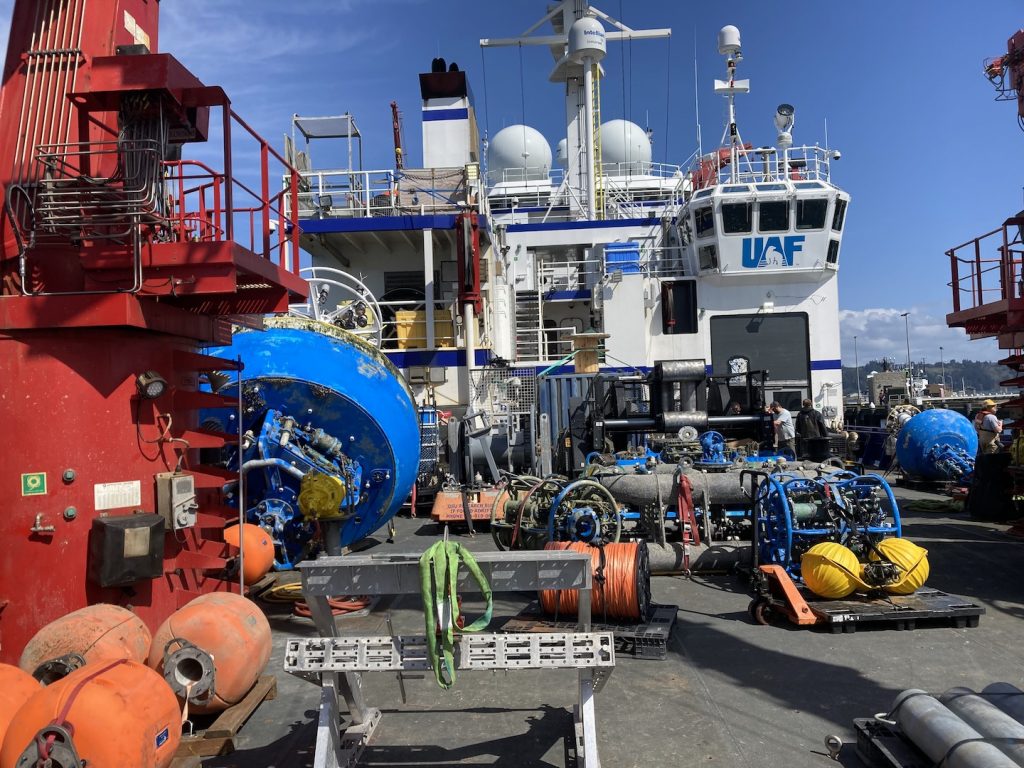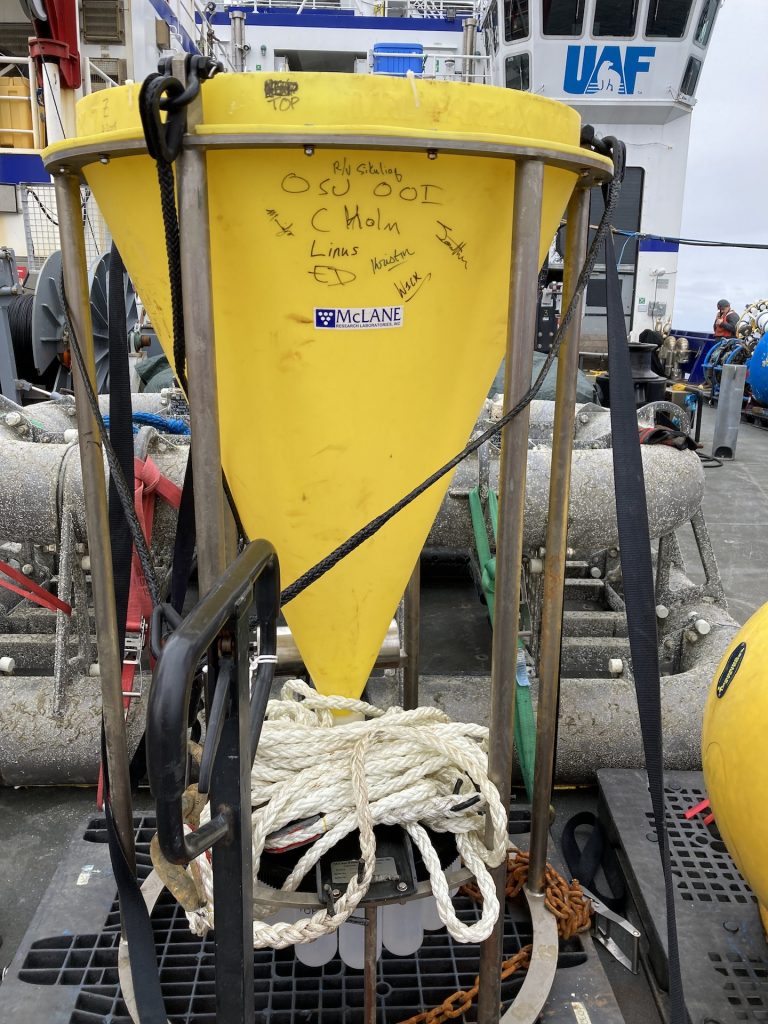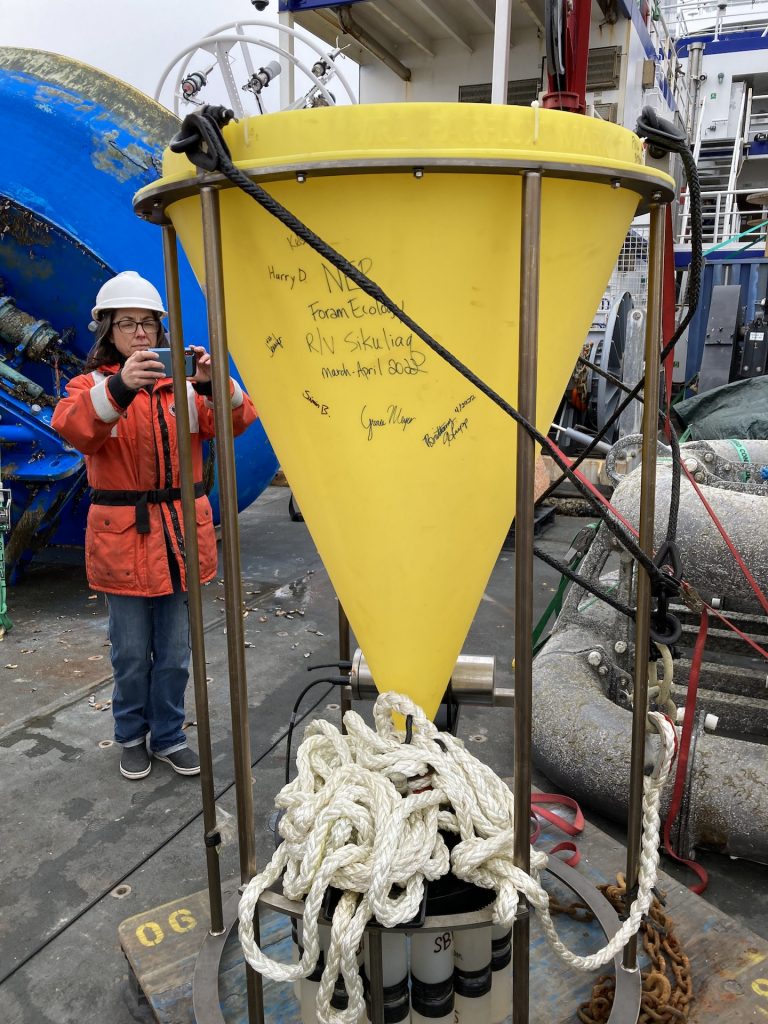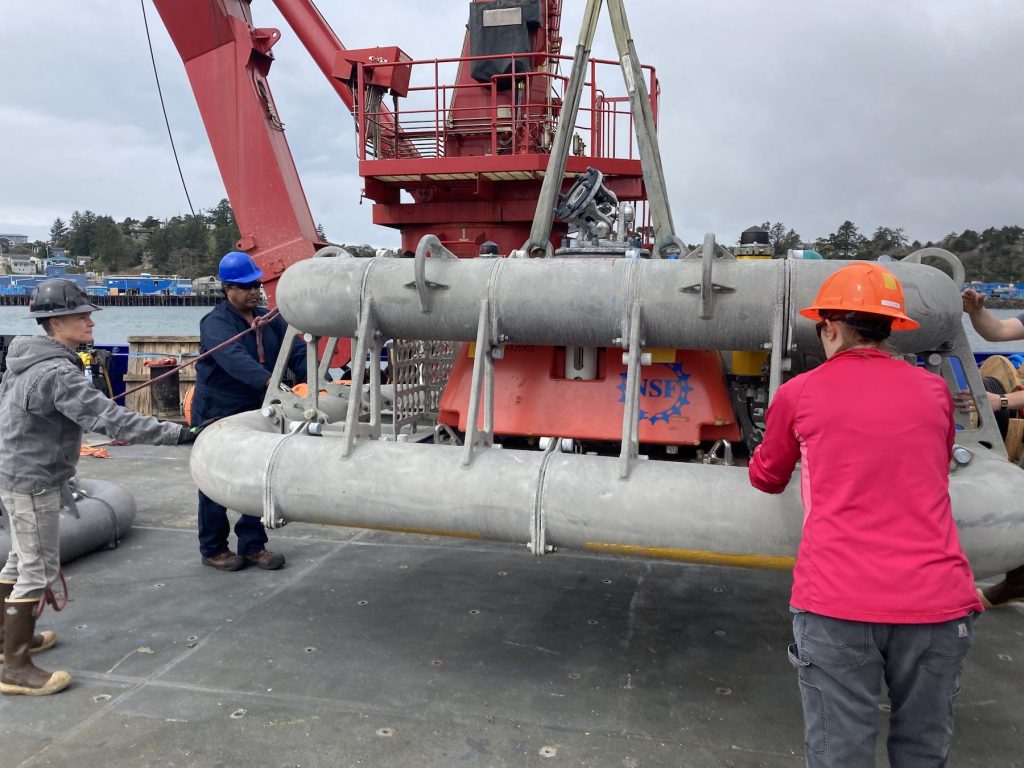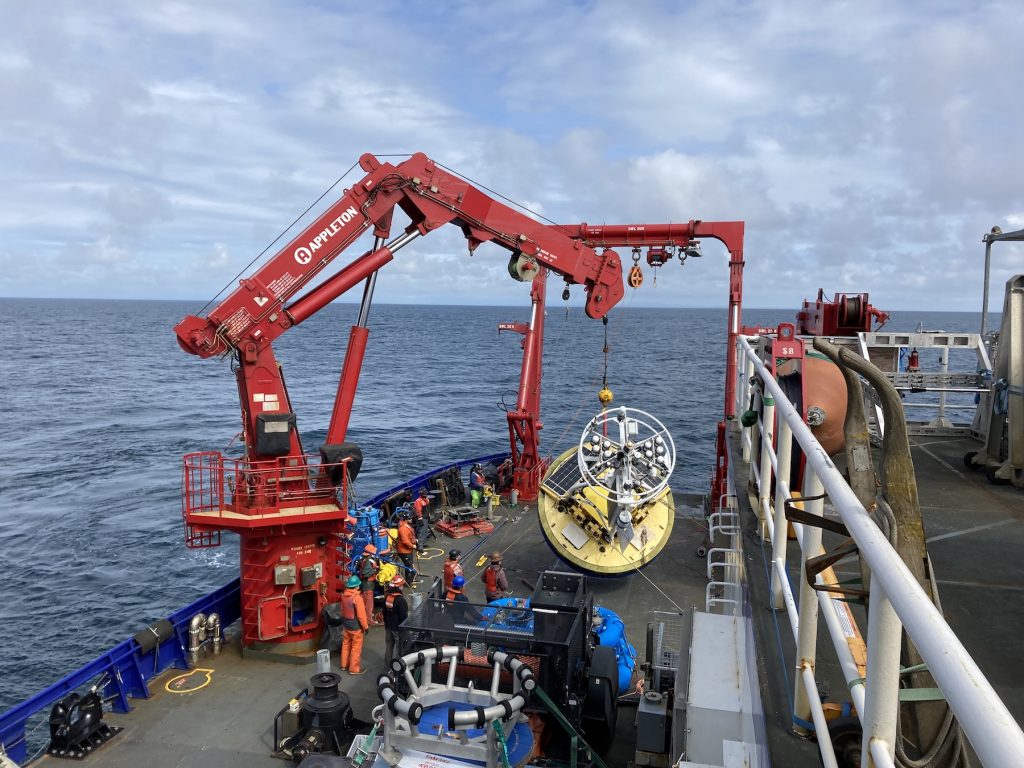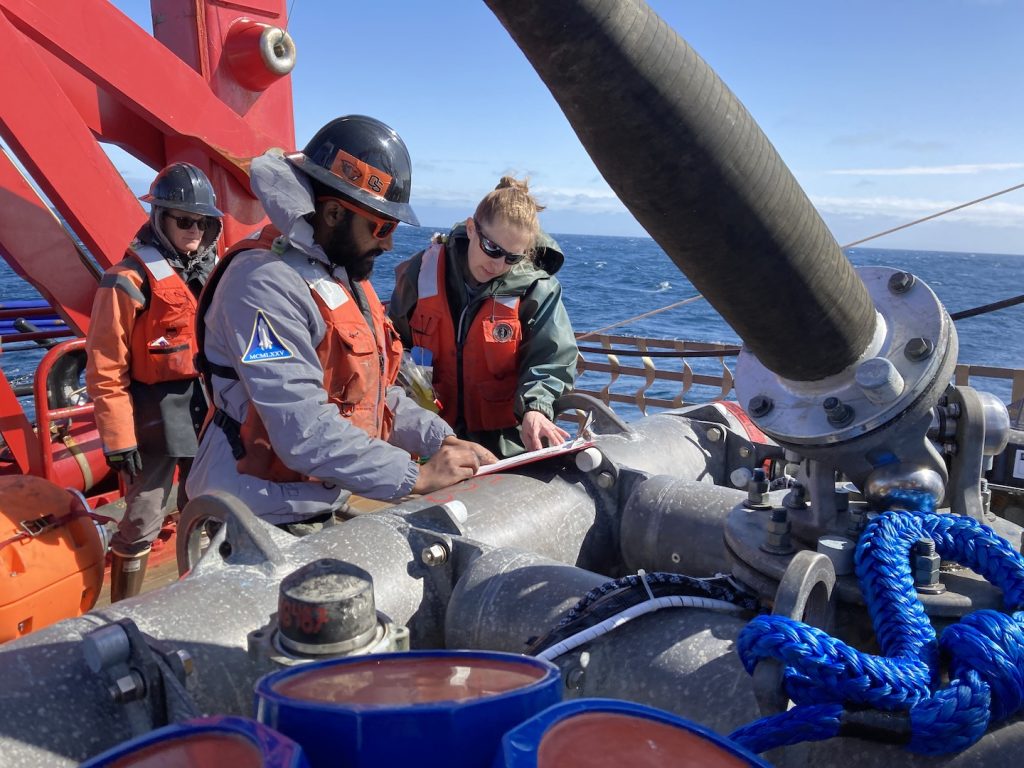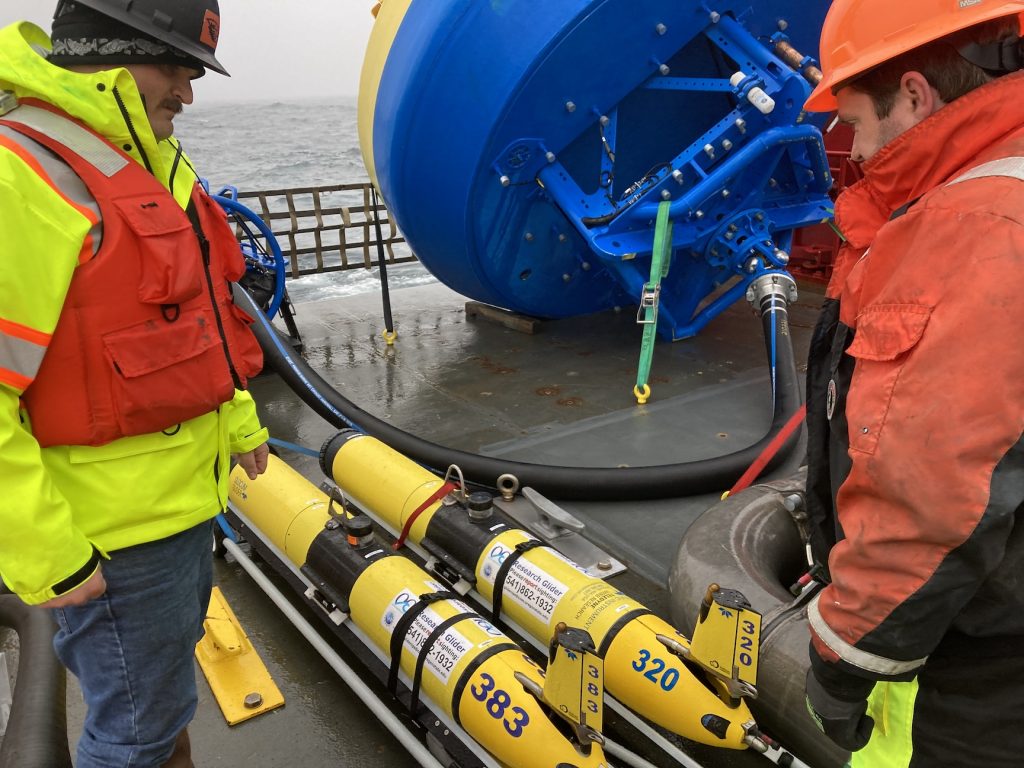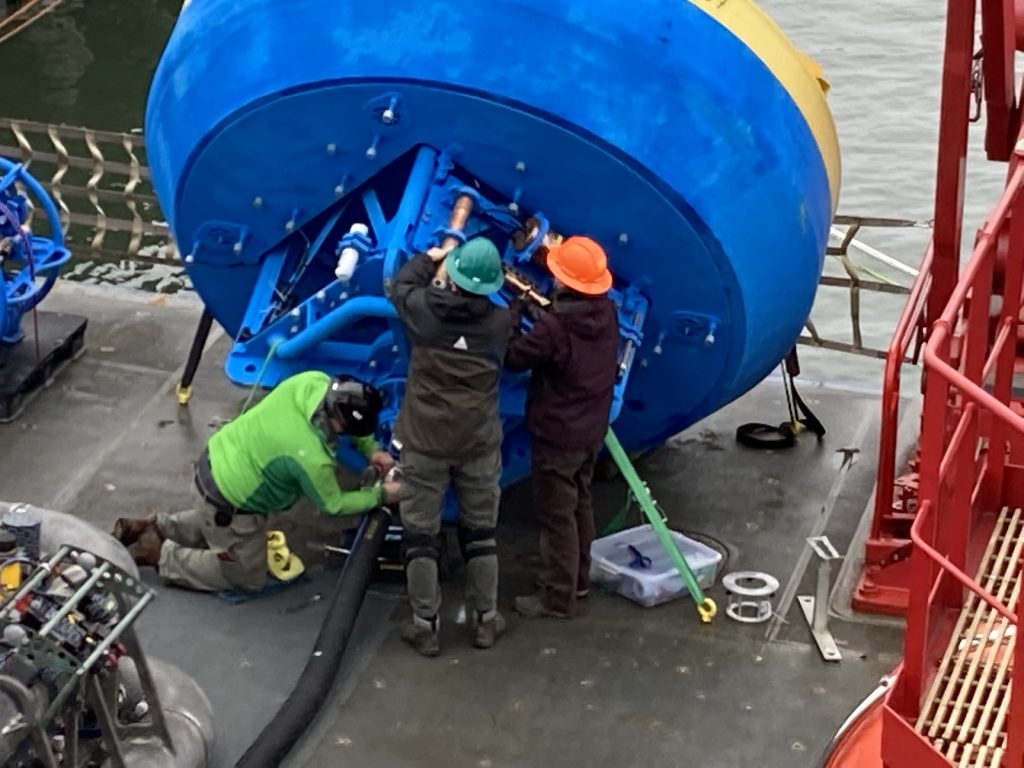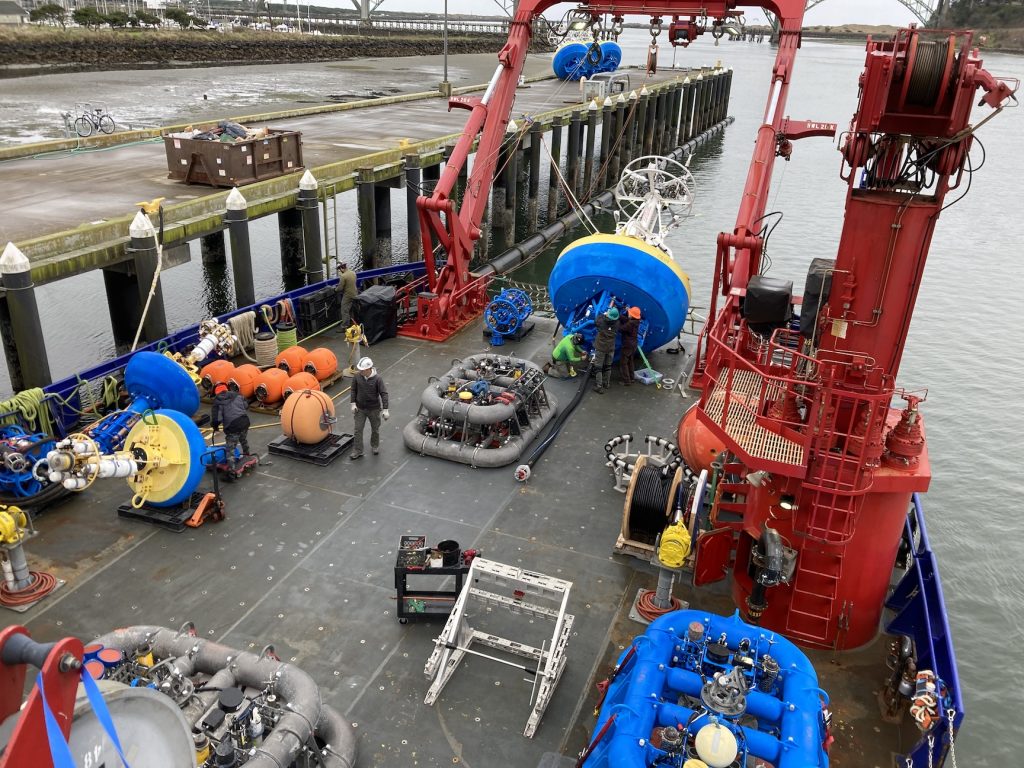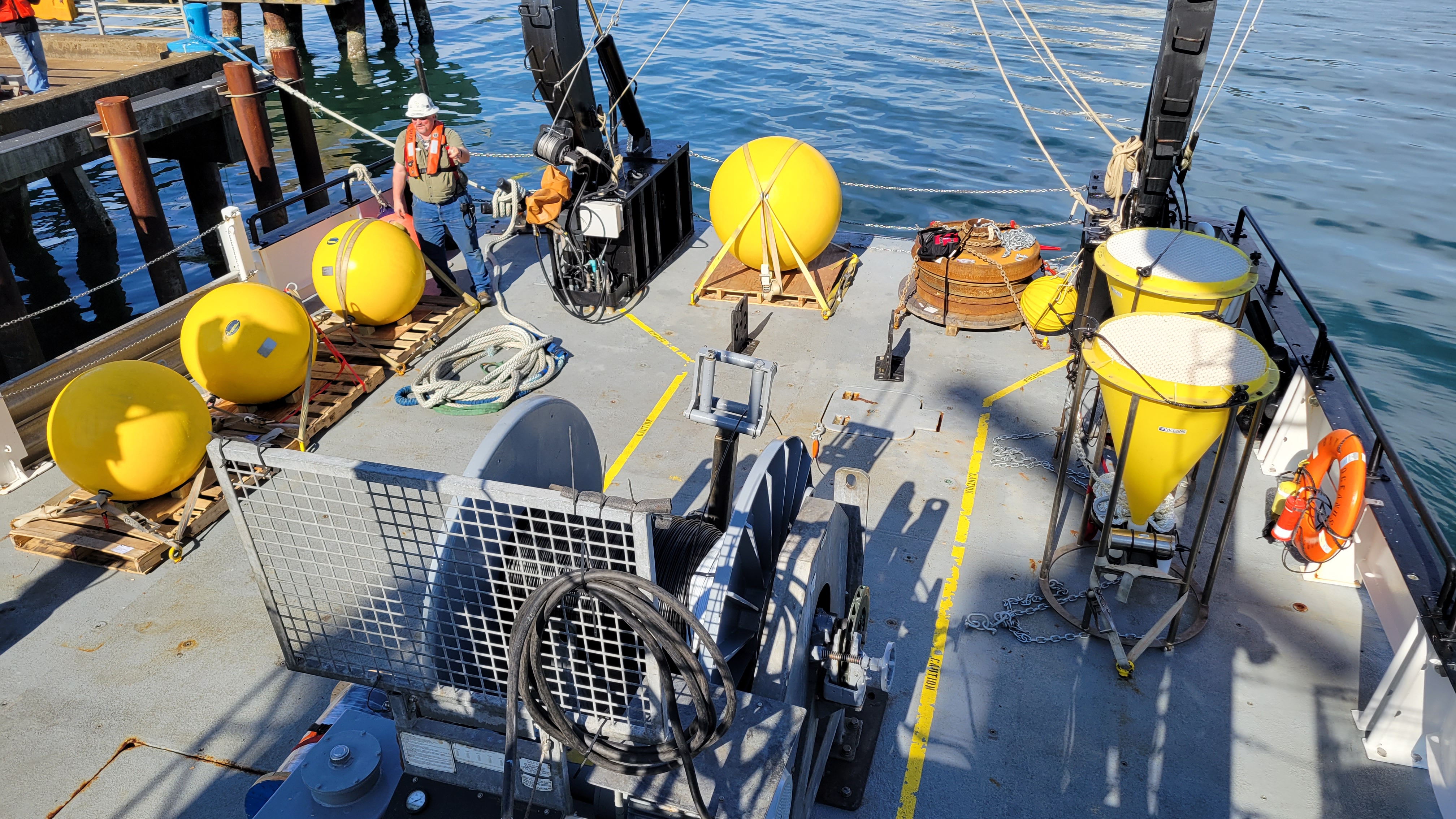Posts Tagged ‘Coastal Endurance 16’
Ready to go home
At the end of an expedition everyone’s eager to get home. Here the R/V Sikuliaq approaches NOAA’s pier in Newport, OR, but there’s one more chore to do – get that recovered equipment off the deck. You might be surprised at how quickly a motivated crew and science party can offload. Within 2 and half…
Read MoreOOI team members on trap
It’s a tradition for folks to sign the sediment traps as they are put out for six months at sea. This trap contains the names of the OOI team members who helped deploy this trap during Endurance 16.
Read MoreOSU greetings
Sediment trap team leader Jennifer Fehrenbacher (Oregon State Univ.) takes a photograph of the sediment trap signature that contains the names of her and Claudia Benitez-Nelson and Eric Tappa’s (Univ. South Carolina) team of foram ecology investigators.
Read MorePort day
The Endurance 16 team deploys enough equipment on the Endurance mooring cruises that they have a port stop to unload the gear deployed on leg 1 and load the leg 2 gear. It goes pretty fast. Within 24 hrs, the team has the leg 1 gear unloaded and the leg 2 gear loaded and tested. …
Read MoreCrane castle
For OOI Endurance mooring operations, the team relies on the excellent lifting equipment offered by the R/V Sikuliaq. Here a recovered surface buoy (about 20 ft tall and 10,000 lbs) is being repositioned using the red starboard crane while science party and deck crew keep things under control with tag lines controlled by air tuggers. …
Read MorePre-deployment checkout
Each OOI oceanographic mooring carries more than 20 sensors and takes months to prepare for deployment. To make sure everything is working and ready to deploy, Akhil Salim and Kristin Politano review the checklist at the mooring’s bottom lander. In the foreground (red disks), is the top of an acoustic Doppler current profiler. It looks…
Read MoreGliders are in the water
The Endurance 16 team completed its first operation of the Spring 2022 OOI Endurance cruise. Here Linus Stoltz (left) and Jonathan Whitefield (right) prepare a couple of ocean gliders for deployment off Oregon. These gliders are designed to operate for three months at a time and range to about 200 miles offshore during their…
Read MorePutting it all together
From left to right Stuart Pearce, Steve Lambert, and Kristin Politano connect the electrical-mechanical (EM) chain at the base of the Washington shelf buoy. Before deployment, the mooring is connected from top to bottom, and instruments are turned on and tested.
Read MoreGetting shipshape
The deck of R/V Sikuliaq on day 2 of loading for OOI Endurance 16 cruise. Most of the gear the team needs for leg 1 is loaded. The remainder of the day the team completed testing of the Washington shelf mooring and tied things down on deck and in the lab.
Read MoreSediment trap mooring
This image shows nearly all the equipment that comprises a typical sediment trap mooring. Syntactic buoys (yellow balls on left and ready for deployment), railroad wheel anchors (at stern), two sediment traps (yellow cylinders on right), mooring wire already spooled on winch. Missing from the photo are the acoustic releases, which can be seen in…
Read More
